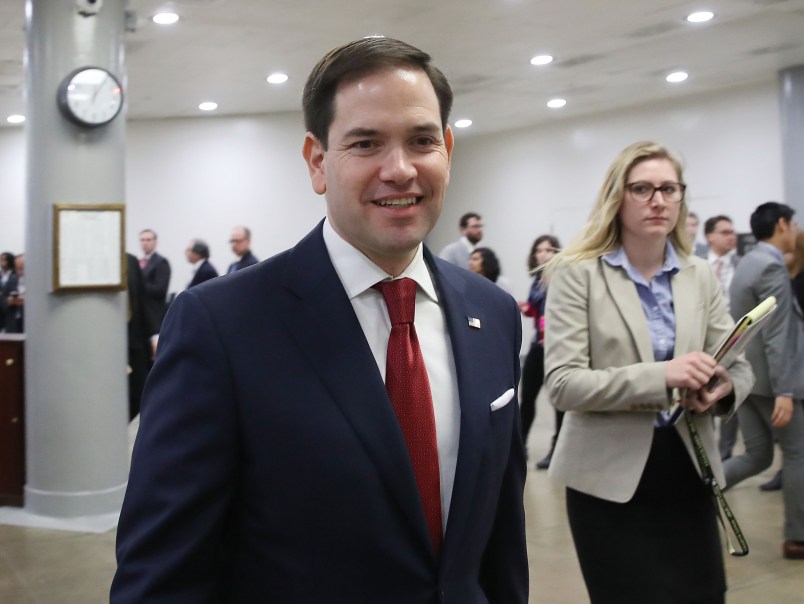Sen. Marco Rubio (R-FL) in a tweet Wednesday linked the Trump administration’s controversial push to add a citizenship question to the Census to an approach to drawing districts that would boost Republican power.
Latest absurd freak out is over #census2020 citizenship question. In every nation citizenship matters, so shouldn’t we know how many we have? And districts apportioned based on # of people not here legally dilutes the political representation of citizens & legal residents.
— Marco Rubio (@marcorubio) March 28, 2018
Rubio is not the first conservative to suggest that data gathered by asking about citizenship on the decennial Census could be used to draw districts based on number of citizens or eligible voters, rather than total population. Currently, states use total population.
The Commerce Department’s own justification for adding the question has instead focused on the need to help the Justice Department enforce the Voting Rights Act. Civil rights advocates and Census experts have been extremely skeptical of that rationale, and of Commerce Secretary Wilbur Ross’ willingness to grant the request.
For one, adding the question without further study risks a significant undercount of immigrant communities — even of immigrants here in the U.S. legally and of citizen children of immigrants — who are spooked by the federal government’s pursuit of such information.
Beyond the potential undercount — which would already shift political power and federal resources to white and rural populations — is the possibility that the move is part of an effort to revive an issue at the heart of a recent Supreme Court case, Evenwel v. Abbott, that sought to transform how legislative districts were drawn in a way that would shrink the political representation of Democratic-leaning urban areas.
In 2016, the Supreme Court unanimously said states were permitted to use total population to draw legislative districts. The justices left open the question of whether states could use some other metric, such as citizenship populations — though conservative Justices Samuel Alito and Clarence Thomas made clear their eagerness to take up a case to settle that issue.
Many of the briefs supporting the use of total population noted that the Census does not even comprehensively collect the data that would allow states to draw districts based on citizenship population. The Trump administration’s effort to add the question appears designed in part to address that problem.
Another obstacle, however, at least when it comes to drawing congressional districts using a metric other than total population is the Constitution, which calls for U.S. House of Representatives apportionment based on “whole number of persons” in each state. The Evenwel case focused on state legislative districts.
Rubio’s office did not respond to TPM’s inquiry as to whether he was just referring state legislative districts.
Even still, such a change would bring about a massive of shift in Republican political advantage, as an analysis of the Evenwel case by CUNY sociologist and redistricting expert Andrew A. Beveridge found.







So, people who are in the country without papers don’t deserve equal protection under the law? The Fourteenth Amendment might differ with that view: “No State shall…deny to any person within its jurisdiction the equal protection of the laws.” Fuck off, Marco, you ignorant lazy POS. Sure, only citizens can vote, but last I checked, the Census was about counting everybody who lives here. Perhaps Rubio and the rest of the GOP criminal class want to revive the Three-Fifths clause?
Who cares about other nations Rubio? Read our constitution, twit, to find out what this nation requires—the census requires counting every person.
“And districts apportioned based on # of people not here legally dilutes the political representation of WHITE REPUBLICAN citizens & legal residents.”
There, FIFY Marco.
This is a Republican urban legend making its way into policy. They think all urban areas are full of “illegal immigrations”. Not true. The POC population is growing and they’re almost all citizens or legal residents. Any reduction in the # of people will require districts to be redrawn and it will have to center on where the people are, which is in areas that lean Democratic.
Not only the 3/5ths Clause.
They want to repeal every single Constitutional Amendment after the 12th.